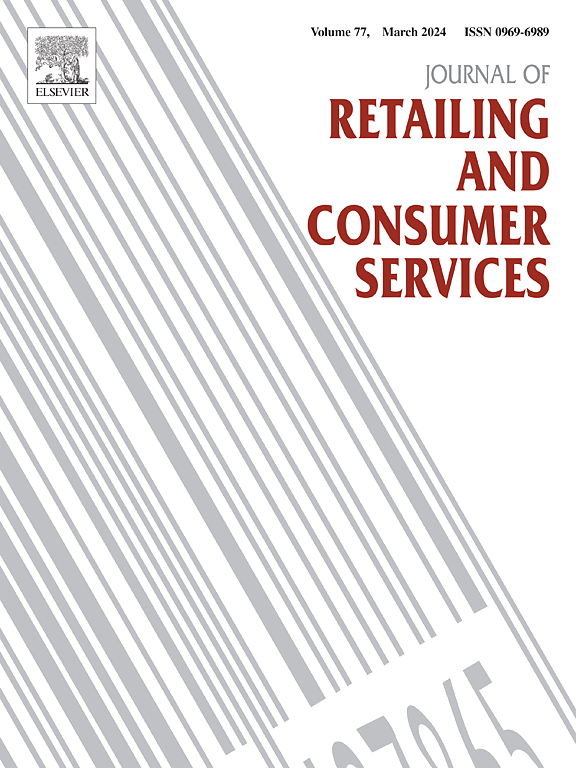The way out – Customer benefits and self-service satisfaction in cashierless shopping systems
IF 11
1区 管理学
Q1 BUSINESS
Journal of Retailing and Consumer Services
Pub Date : 2025-03-10
DOI:10.1016/j.jretconser.2025.104280
引用次数: 0
Abstract
Introducing cashierless shopping systems offers an opportunity to innovate the checkout process for stationary retailers who encounter significant competition from both, existing stationary competitors and online retailers. The present study analyzes three types of cashierless shopping systems: mobile apps, face recognition, and self-checkouts. Following a review of customer benefits of digitization in stationary retailing, we integrate customer convenience, empowerment, and experience as well as self-service satisfaction in the Unified Theory of Acceptance and Use of Technology. An initial study with 406 participants validates the underlying framework while extending it with technology affinity and privacy concerns. Customer benefits in cashierless systems are explored based on 539 questionnaires. Performance expectancy, effort expectancy, customer empowerment, and customer experience positively impact shoppers’ self-service satisfaction and willingness to use cashierless systems. Conversely, concerns about data privacy have a negative effect. The results reveal that participants perceive all types of cashierless shopping systems as comparatively similar. These systems perform the checkout process, empower shoppers, create positive service experiences, and adhere to data protection regulations. Qualitative insights ultimatively identify five key topics: convenience, security concerns, social concerns, technical concerns, and the shopping situation. These findings highlight the complexity of customer preferences regarding cashierless shopping systems.
出路 - 无收银台购物系统的客户利益和自助服务满意度
引入无收银员购物系统为文具零售商提供了一个创新结账流程的机会,这些零售商面临着来自现有文具竞争对手和在线零售商的激烈竞争。本研究分析了三种类型的无收银员购物系统:移动应用程序、面部识别和自助结账。在回顾了数字化在文具零售中的客户利益之后,我们将客户便利、授权、体验以及自助服务满意度整合到技术接受和使用统一理论中。一项有406名参与者的初步研究验证了底层框架,同时根据技术亲和性和隐私问题对其进行扩展。基于539份调查问卷,对无收银系统的客户利益进行了探讨。绩效预期、努力预期、客户授权和客户体验积极影响购物者的自助服务满意度和使用无收银员系统的意愿。相反,对数据隐私的担忧会产生负面影响。结果显示,参与者认为所有类型的无收银员购物系统相对相似。这些系统执行结账流程,赋予购物者权力,创造积极的服务体验,并遵守数据保护法规。定性分析最终确定了五个关键主题:便利、安全问题、社会问题、技术问题和购物情况。这些发现凸显了顾客对无收银员购物系统偏好的复杂性。
本文章由计算机程序翻译,如有差异,请以英文原文为准。
求助全文
约1分钟内获得全文
求助全文
来源期刊
CiteScore
20.40
自引率
14.40%
发文量
340
审稿时长
20 days
期刊介绍:
The Journal of Retailing and Consumer Services is a prominent publication that serves as a platform for international and interdisciplinary research and discussions in the constantly evolving fields of retailing and services studies. With a specific emphasis on consumer behavior and policy and managerial decisions, the journal aims to foster contributions from academics encompassing diverse disciplines. The primary areas covered by the journal are:
Retailing and the sale of goods
The provision of consumer services, including transportation, tourism, and leisure.

 求助内容:
求助内容: 应助结果提醒方式:
应助结果提醒方式:


